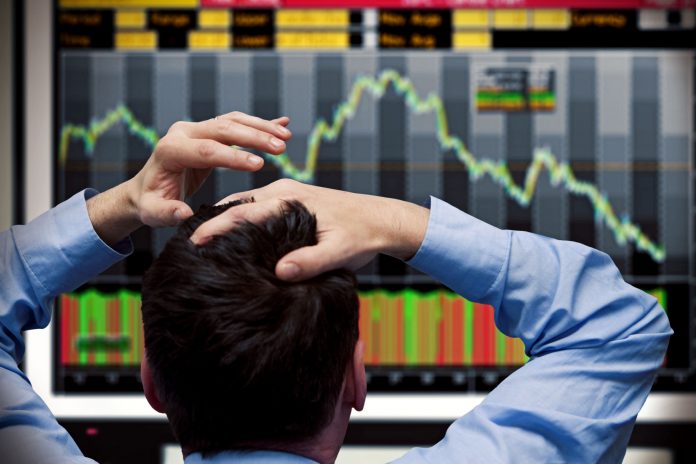After another day “in the green”, it seems investors have fallen out of love with stocks (for the time being) as concerns over slowed economic growth once again stifle market confidence. In addition, Wall Street continues to be dismayed by ongoing U.S.-China trade negotiations, which have shown little signs of progress despite big talk from both sides of the table.
Just minutes after the market opened, every index looked somewhat deflated after disappointing U.S. economic data was released. The S&P 500 dropped 0.5% and the Dow Jones Industrial Average fell 119 points, dragged down by a Johnson & Johnson plunge. As usual, the NASDAQ Composite got the worst of it, sinking 0.6% and threatening to break its 8-day winning streak.
And out of all the economic indicators made public today, the most damning may have been the Philadelphia Federal Reserve business index (or Philly Fed Index), which measures regional changes in manufacturing. Any reading above zero indicates factory-sector growth, while anything below zero (a negative value) means that a contraction has taken place.
This morning, the Philly Fed Index fell to negative 4.1, a number we haven’t seen since May 2016, when the market suffered a three-month-long correction period just a few months later. And based on what was revealed yesterday in the Fed’s minutes from their January meeting, it looks like Chairman Powell and co. were expecting an economic crunch in one way or another.
In the meeting’s notes, which included a plan to end its balance-sheet normalization process faster than initially expected, the committee also discussed “a rapid waning of fiscal policy stimulus, or a further tightening of financial market conditions.”
Concerns over downside risks to the U.S. economy certainly seem to be “baked in” to the Fed’s strategy for 2019, signaling some self-awareness that many investors were hoping for. But even if Powell remains sensitive to the market’s needs, it might not be enough to stop a significant equity correction once a slowdown rears its ugly head.
Thus far, the Fed has managed to keep market bulls very happy, aided by President Trump who has entered his “great unifier” phase, hoping to cool tensions with both political opponents and China alike. The S&P 500 is up over 10% on the year thanks to the holiday sentiment shift, but some analysts are concerned that the rally might be over now that earnings season has ended and the White House has exhausted its goodwill.
“Risk markets continue to probe higher with the SPX index […] effectively completing the right hand side of the ‘V’ [in regards to the S&P 500’s recent price action],” said Michael Shaoul, chairman and CEO of Marketfield Asset Management in a written statement on the current market conditions.
“With earnings season winding down, the FOMC minutes now released and some sort of a trade deal (or benign extension past March 1st) priced into the market further progress may be hard to squeeze out of the headline index.”
The market, which continues to rise in a somewhat illogical fashion, will eventually “give up the ghost” and make it’s move back down. I mentioned yesterday that it won’t take much for bulls to start jumping ship, and the straw that breaks the camel’s back in this case may have just been discovered earlier this morning. The less-than-stellar economic figures, especially the Philly Fed Index, might be the seed that eventually blossoms into a wilting market. Investors who collect their winnings now could be getting out at exactly the right time, while everyone else waits around to smell the flowers.








